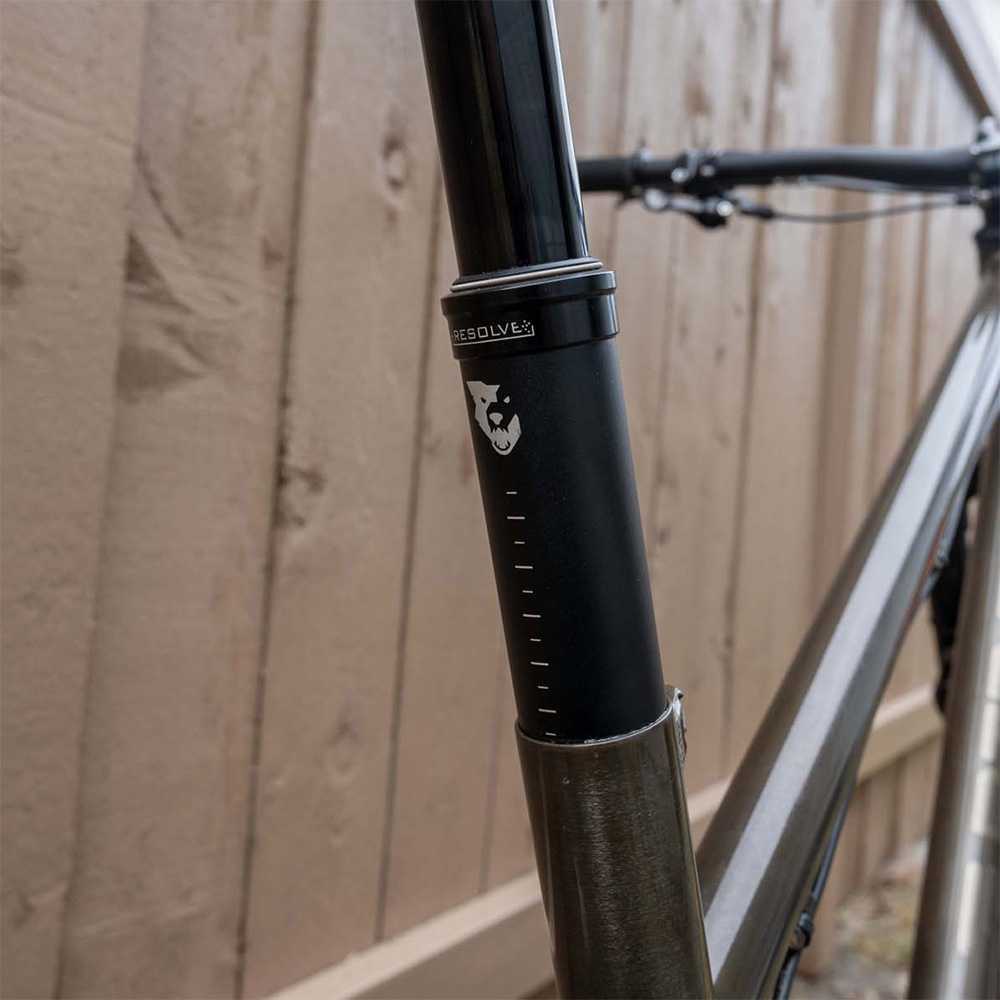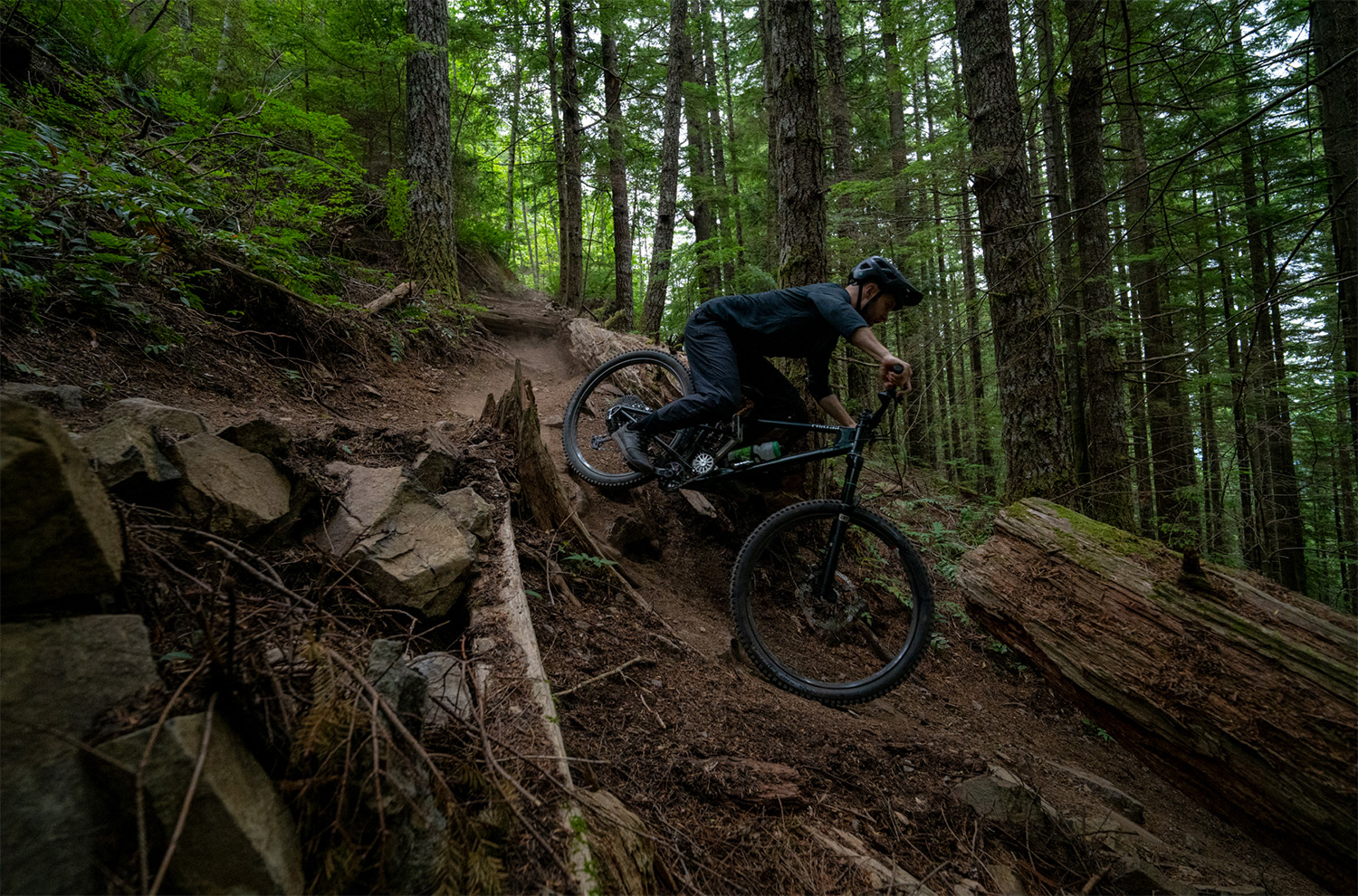
Intro
Most of our reviews are pretty long — and take a long time to produce — because we want to provide enough info for you to actually determine whether the gear we tested will work well for you.
But we get asked to check out an increasingly wide range of products, and sometimes, we just want to tell you about something we’ve been using and loving lately.
So that’s where this monthly series — Stuff We Like — comes in, where we keep you current on a broad range of stuff we’re currently digging.
And if there’s something you love that you think we ought to check out, drop us a note in the comment section below.
Michelin DH16
MSRP: $100
David Golay: I already posted a Full Review of the DH16 last year, and I’m not including it here because I have drastically different things to say. Rather, I’ve just been getting back on the DH16 after a lengthy hiatus as conditions dry out up here, and it continues to be a truly excellent loose-over-hard tire for gravity use.
Loose-over-hard can be an especially tricky set of conditions when it comes to tire choice. You need something that has good support and doesn’t feel squirmy on the firmer spots, but that still digs in and gets good purchase (especially tricky under braking) when things are soft and loose.
The DH16 balances those two competing objectives especially well. Now, it’s not the most versatile tire — it doesn’t take a ton of moisture for the DH16 to start to feel out of place, especially as a front tire — but it’s truly great in the right conditions.
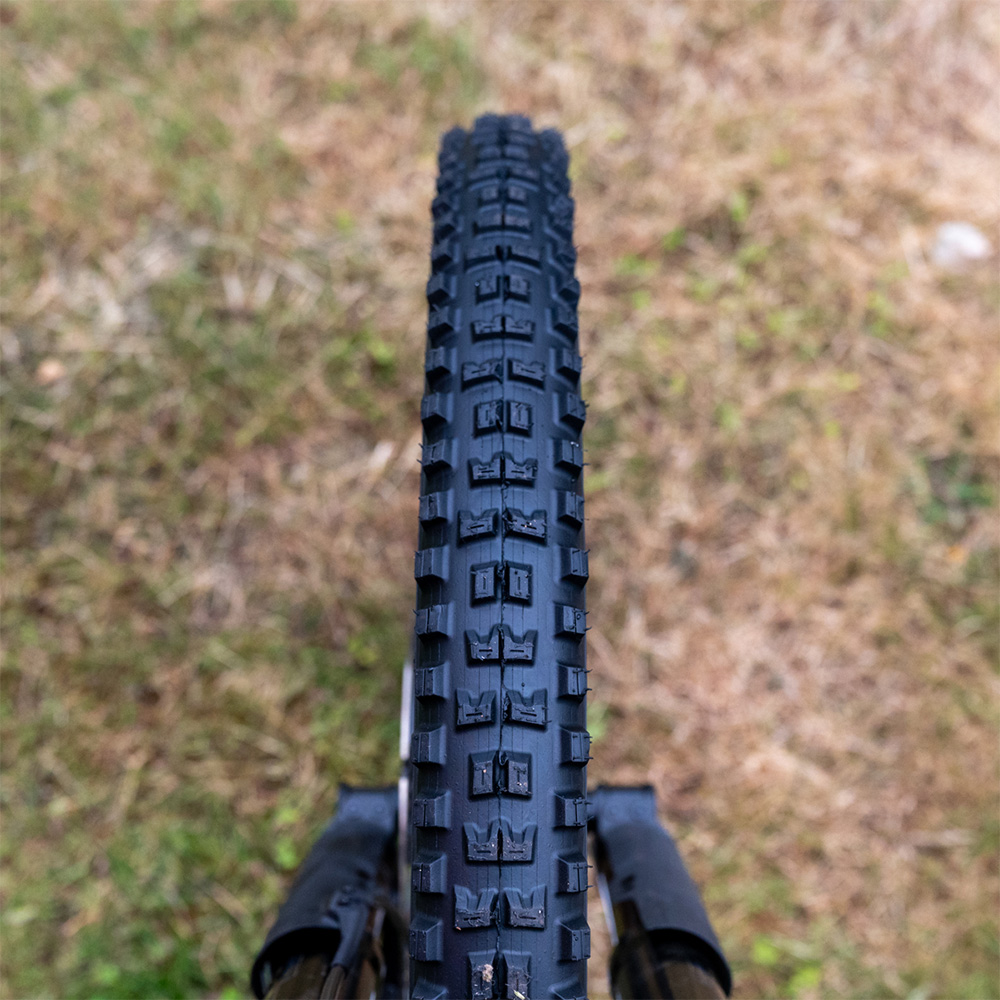
I’d also love to see Michelin roll out an Enduro-casing version of the DH16 — at about 1,360 g a pop (29’’), the DH16 is quite heavy, and the casing is likely overkill for a lot of folks. But if you’re okay with the weight and/or just want a very beefy casing, the DH16 rolls pretty well, and it’s a stellar performer in dry, loose conditions (short of full-on bottomless moon dust).
Curious Creatures Women’s Bitterroot Bloom Short
MSRP: $125
Kristin Sinnott: I’ve been a fan of the Curious Creatures Women’s Sun Dog Pant for the past year, and recently, I ordered a second pair. I also ordered the Bitterroot Bloom Short because it uses the same fabric and the same design at the waist. I’m currently wearing the shorts as I write this, as I’ve done every day this past week, because (1) I just biked to town and these are my go-to bike shorts, (2) they are ridiculously comfortable, and (3) they are flattering.
The things I like about the shorts make up a fairly long list, and it seems that every decision that was made regarding the design of these shorts is one I wholeheartedly agree with.
Like the Sun Dog Pants and the Sun Dog Shorts, the Bitterroot Bloom Short has a wide, knit waistband that is stretchy and smooth. It pairs nicely with my hip pack, especially given the mid-rise design of the shorts, and the waistband stays put while moving.

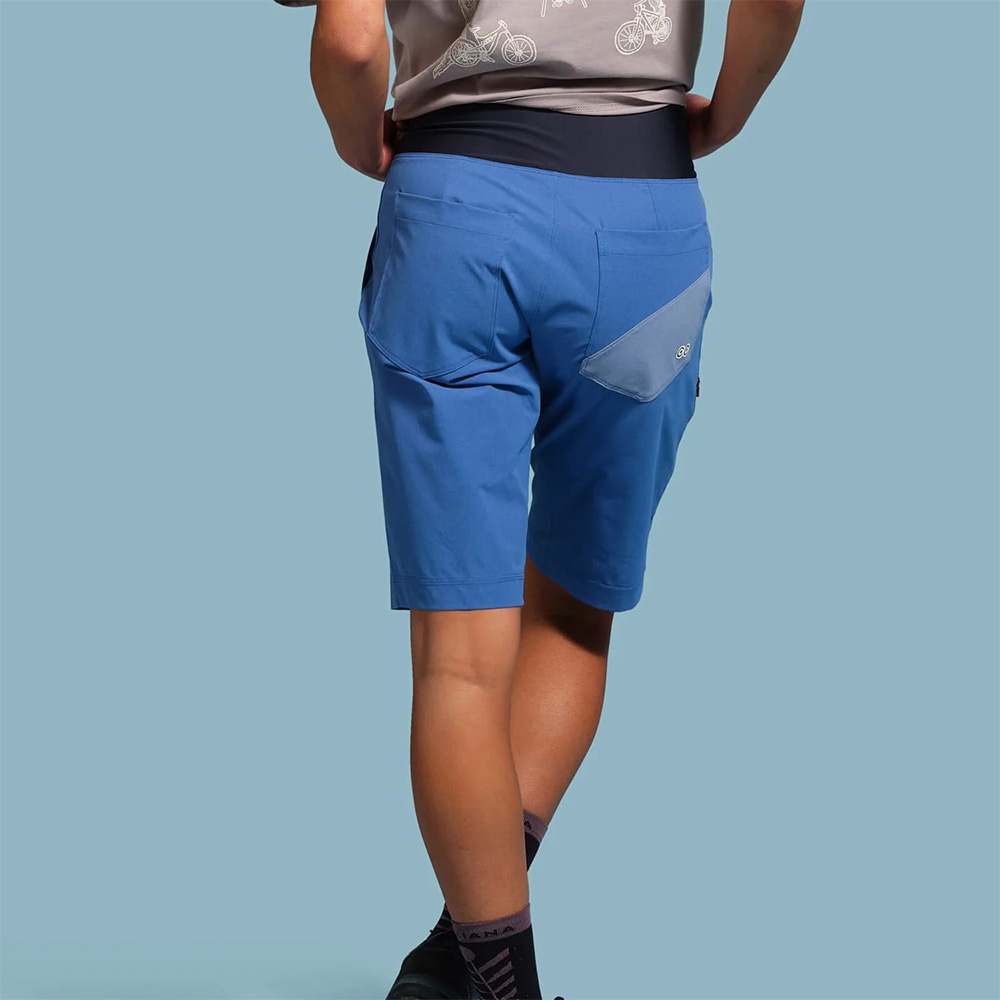
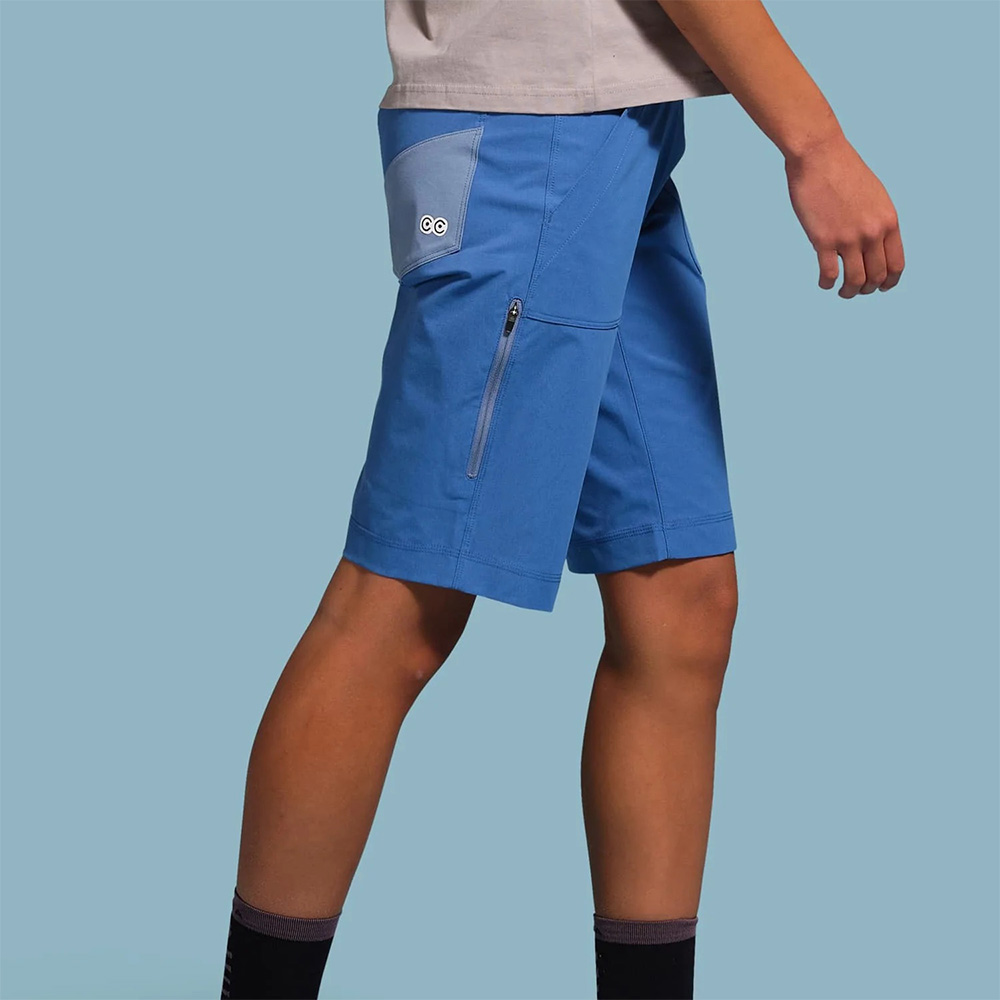
I haven’t needed to hike them back up, and as an extra security measure, there is an internal drawcord that can be used to cinch them down. I do recommend tying the cord before throwing them in the wash so you don’t have to dig the cord out from inside the waistband.
These shorts’ 100% polyester, four-way-stretch fabric is the same as the Sun Dog Pants and Shorts, and while I’ve only had the Bitterroot Bloom Short for a short time, my Sun Dog Pants look like new after many bike rides, hikes, and more. Another thing I like is the Bitterrot Bloom’s 12.5 in / 32 cm inseam, which hits just above my knee, providing good coverage without being too long.
Another favorite design element – the pockets. There are two, fairly deep drop-in hand pockets, two drop-in rear pockets, and one zippered thigh pocket. I use the thigh pocket most often for storing my phone. The phone sits slightly behind my leg when riding, and I don’t usually notice it.
Regarding how they look, well, I like how I look in the mirror, but I’ve also received numerous compliments while wearing the shorts both on and off the bike. At 5’8”, 135 lbs / 173 cm, 61 kg, I opted for a size 8; the waist and overall fit are quite nice. If you’re looking for a new pair of shorts, whether for biking, hiking, casual wear, or whatever, I recommend looking into the Bitterroot Bloom Short. If the inseam seems too long for you, the Sun Dog shorts are very similar and worth checking out, too.
PowerUp 4.0 Airplane
MSRP: $59.99
Simon Stewart: This product falls into the category of a gift you bought for your kid that you are now totally obsessed with, and your kid has to pry it out of your hands just to have a turn — parents out there now exactly what I’m talking about…
Part of the reason is that the world of paper airplane flight, either powered or non-powered, is absolutely fascinating (and way bigger than I would’ve imagined). On top of that, PowerUp’s 4.0 Airplane is a fantastic, well-engineered piece of kit, so let’s get into the details.
Without getting too nerdy, the PowerUp 4.0 is essentially a motor system that can be attached to just about anything resembling a plane (within reason and appropriately sized, of course), and it’s controlled from your phone. The hardware includes a cockpit that houses the Bluetooth module, battery (rechargeable), sensors, a carbon fiber frame, and twin high-RPM motors.

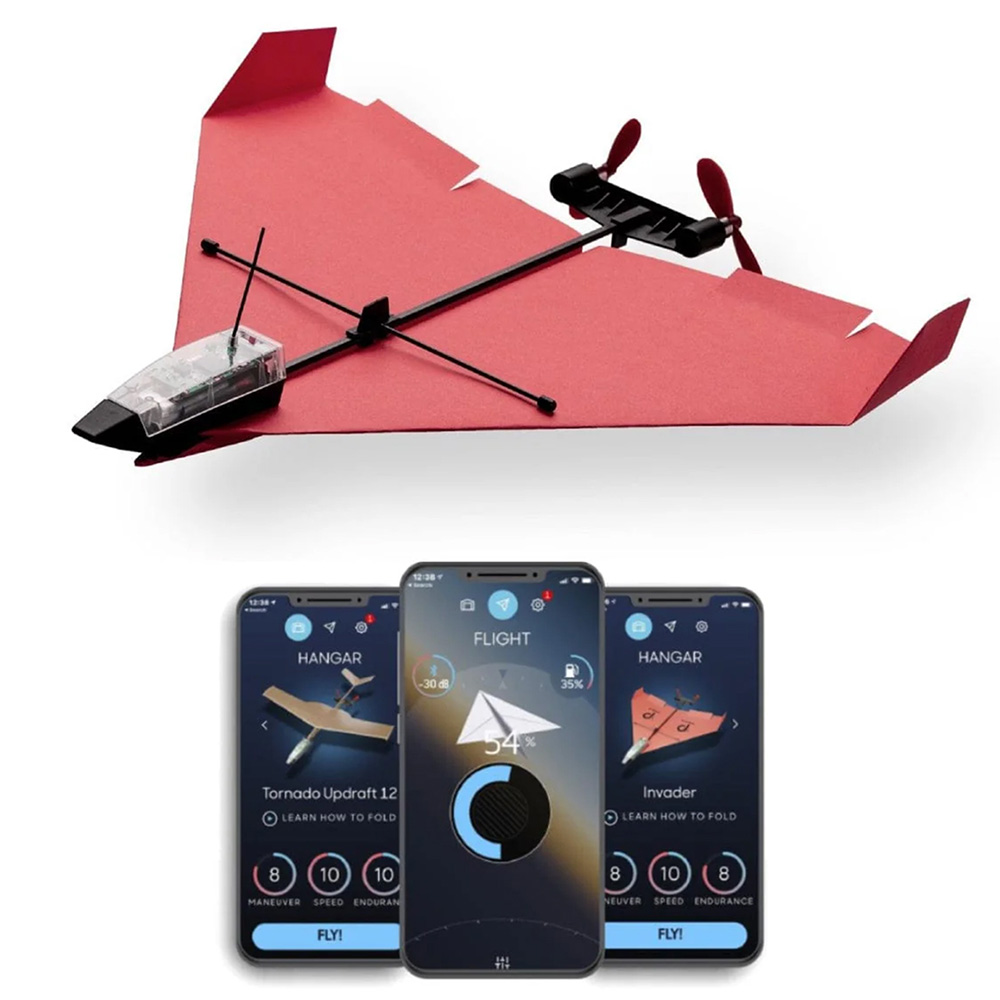
On the software side, there is an app available for iOS and Android devices that takes advantage of your phone’s internal gyroscope to convert it into the PowerUp 4.0 controller.
The PowerUp 4.0 Airplane kit comes with four paper airplane templates, which are plenty to get you started. PowerUp also offers a book of templates, and each different design has its own unique flight characteristics. Additionally, once you select which airplane you’ve folded in the app, the flight controls are optimized specifically for that airplane. There are also numerous online tutorials, as well as opinions on paper weight, technique, and other topics. I find folding the paper airplanes to be one of the more enjoyable aspects of the whole experience, but it’s a giant rabbit hole, so consider yourself warned.
Flight conditions and location are essential when you’re ready for take-off. A light breeze is optimal, as well as having plenty of space clear of trees and buildings to get the hang of it. Once up in the air, it’s unbelievable how well the airplane you just folded out of a piece of paper can actually fly. The PowerUp app records you’re flight time, and then immediately gives you a daily ranking against other PowerUp pilots for that day, week, and all-time — the ranking component is hugely addictive, even if you’re only a tiny bit competitive.
Lastly, as fun as it is for adults, flying a PowerUp paper airplane really is an awesome activity for kids — my 8-year-old loves it. He talks about aerodynamics, wind speed, thrust, lift, and I’ve watched him adjust the airplane’s elevators to control pitch. PowerUp claims their 4.0 airplane kit is STEM-ready, which refers to an initiative focused on preparing students for careers in Science, Technology, Engineering, and Mathematics. From what I’ve seen with my son, I don’t see any reason to disagree.
Arcade Belts
MSRP: $24.95–$54.95
Luke Koppa: Several of our reviewers have recommended Arcade’s stretchy belts in the past, but I recently got to try several more options from their expansive lineup. And, as someone who often prefers pants and shorts that are a bit bigger / baggier, they’ve been getting a lot of use.
The core elements of these belts haven’t changed that much over the years. They’re still built with elastic materials for a more comfortable and motion-friendly fit, and they feature low-profile closures that you’re less likely to notice while hunching over or when layered under other things like a backpack or multiple layers.
However, these days, you can get those core elements in a huge range of designs, and I’ve been trying at least one offering from each of their three collections.
The “Adventure” series is the most activity-friendly series, featuring generous stretch from their 85% post-consumer recycled REPREVE polyester, as well as thin, plastic buckles that you can keep on while going through airport metal detectors.
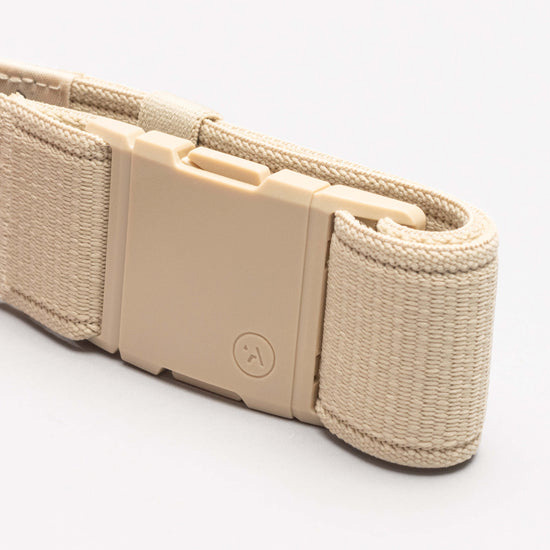
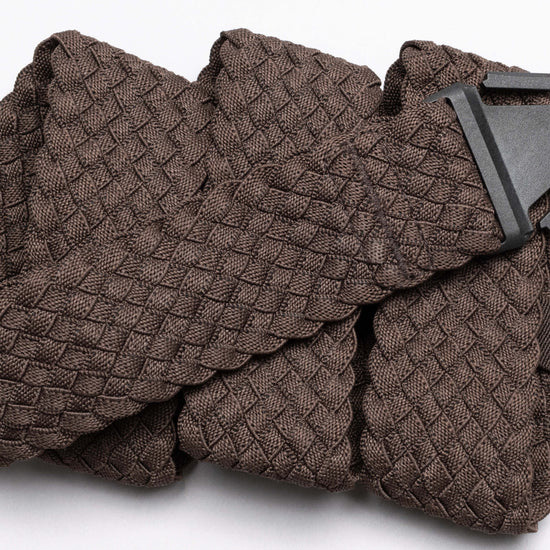

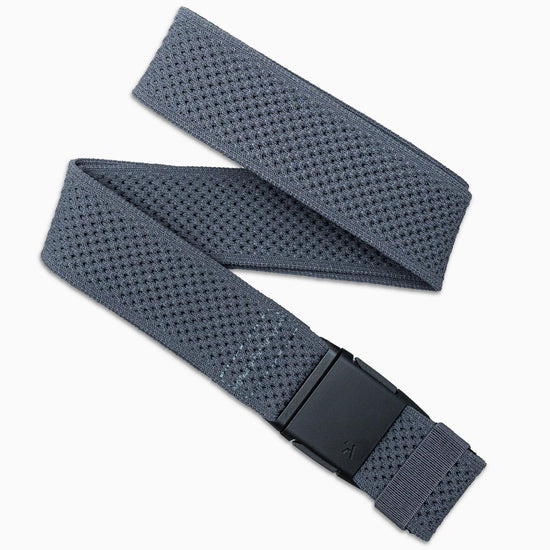
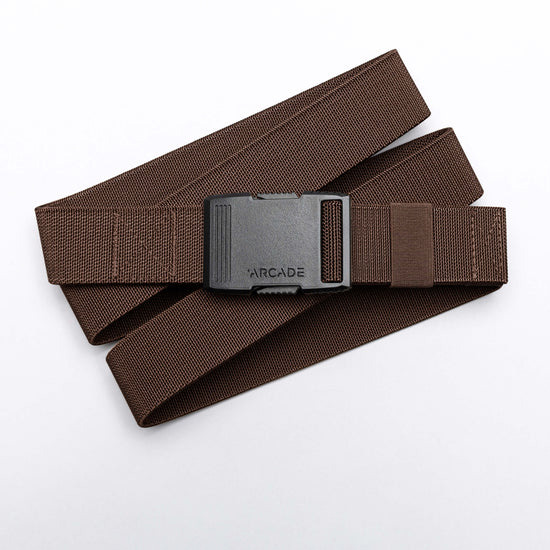
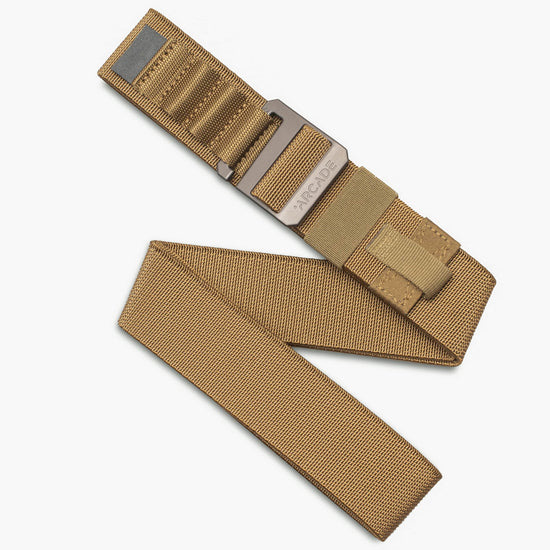
These are my favorites for pretty much any outdoor activity — I use them on most of my ski pants, hiking trousers, and fishing waders.
The “Lifestyle” collection features several different styles, but the general throughline is that they tend to look a tad less ‘sporty’ and don’t stand out as much if paired with your usual work or going-out getups. However, they’re still much more comfortable and less noticeable than almost any static, non-stretchy belt I’ve used. The Futureweave series is a modern twist on the braided belt, while the Motion features a more classic-looking (but still low-profile) metal buckle and webbing strap material. The Momentum belt has a very understated aesthetic, but its more open, almost mesh-like strap offers a bit of added breathability.
Lastly, the “Utility” line features generally burlier and sturdier materials. These belts’ thick webbing isn’t quite as elastic as the straps in the other collections, but the Cordura-like weave does provide better grip on most fabrics, making it particularly worthwhile if you need your belt to hold up more weight. That can be helpful whether you’re trying to stash as many canned beverages in your pockets as possible, or you’re someone who actually knows why there’s a little loop sewn on your double-knee Carhartts. The Utility belts also feature a more utilitarian aesthetic, which I personally enjoy, and they’re available with a burly plastic buckle or an aluminum hook that you can slot into various loops on the strap to adjust tension.
As many others have stated before, Arcade Belts are sweet, and I now find it annoying to go back to a static belt with a bulky closure after experiencing the comfort that Arcade’s alternatives provide.
High Above Venture 3D Hip Pack
MSRP: $200
David Golay: I’ve been a big fan of a number of High Above’s packs over the years, and the new Venture 3D is a nice twist on their standard Venture hip pack.
The broad strokes of the design are similar to the standard Venture. It’s a 2.5-liter hip pack with a flap closure, secured by a Fidlock magnetic buckle. Inside, there’s a large main pocket with a baffle divider against the back panel, two stretchy pockets against the front panel, and a zippered pocket with a key clip behind those.
That’s similar, but not identical to the Venture; the biggest difference is that the interior zippered pocket on the Venture 3D is accessed from inside the main pocket rather than underneath the top flap from the outside of the pack.
The flap-style closure is one of my favorite features of the Venture, and it works equally well on the Venture 3D. The biggest upside is that it makes the total volume of the pack adjustable, so that it doesn’t bounce around as much if you have the pack only partially full. It’s also quicker and easier to open and close (especially one-handed) compared to a zipper.
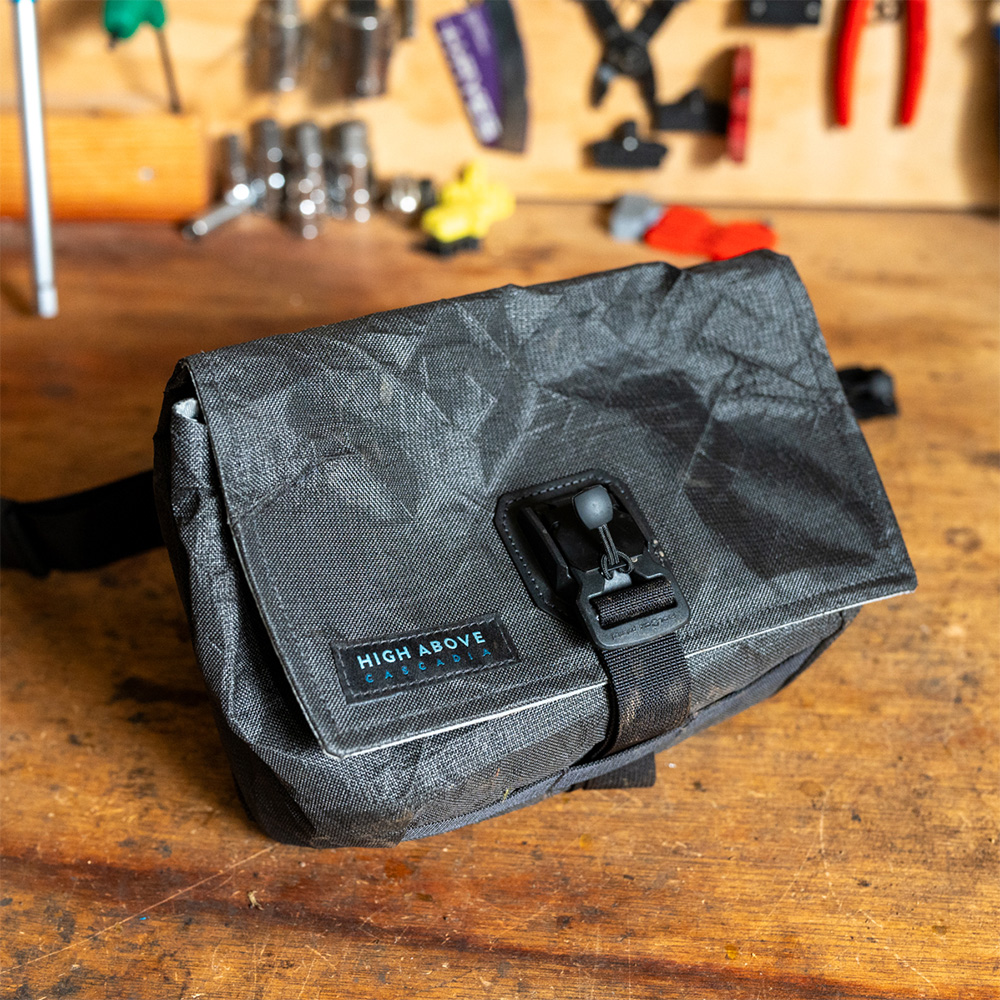
The “3D” part of the name comes from the fact that the Venture 3D uses a 3D-printed back panel with a funky grid structure to make it breathable, pliable, and cushy. I was a little skeptical that the 3D-printed panel would make much of a difference vs. being a bit of a gimmick, but it’s got some real upsides. It’s a little cushier-feeling than the standard back panel, and it makes a surprising difference in how stable the pack feels by being grippier. Despite that, I’ve found it to be very comfortable and haven’t had any issues with chaffing or skin irritation, even when wearing it underneath a jersey with direct skin contact.
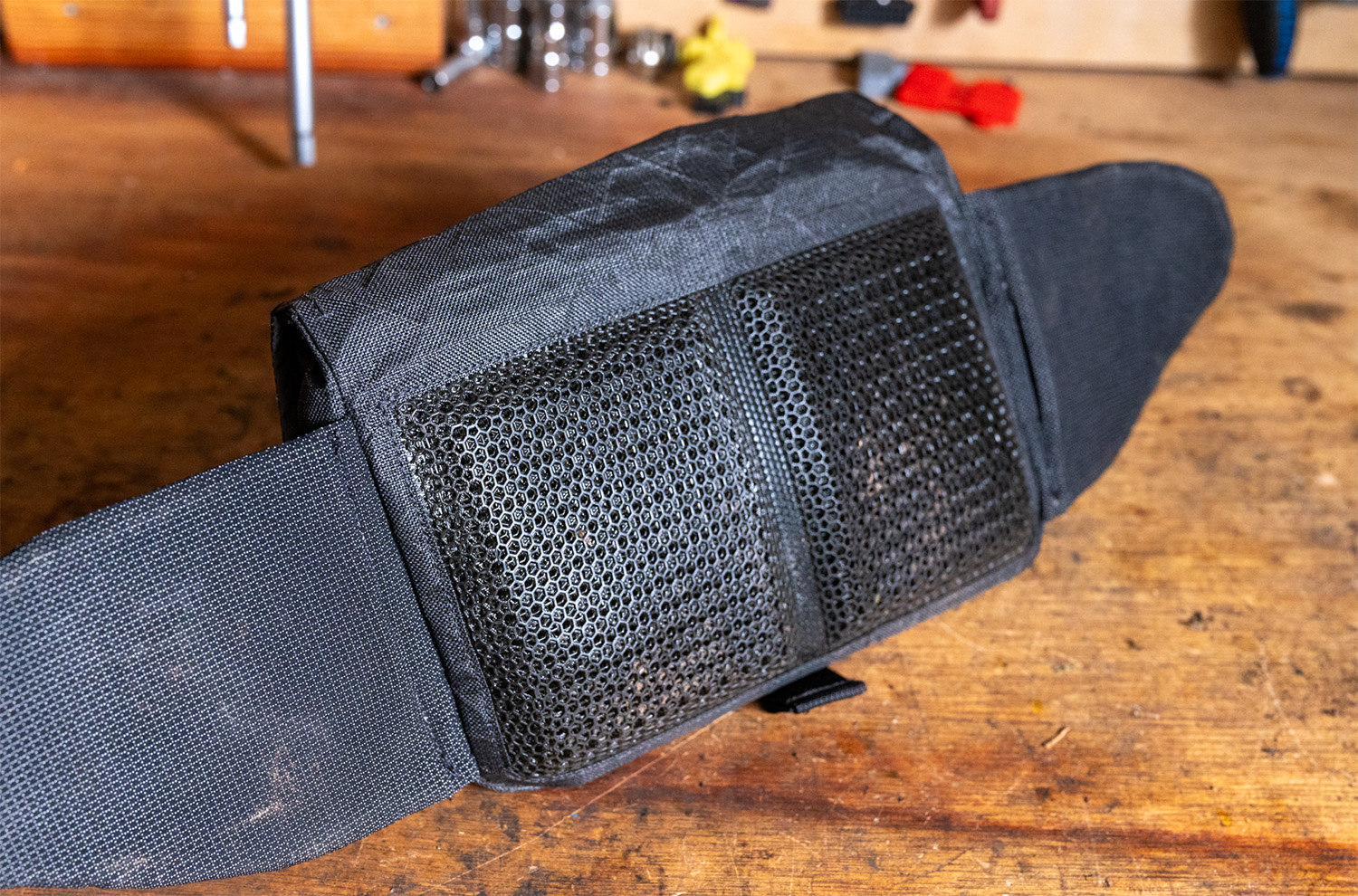
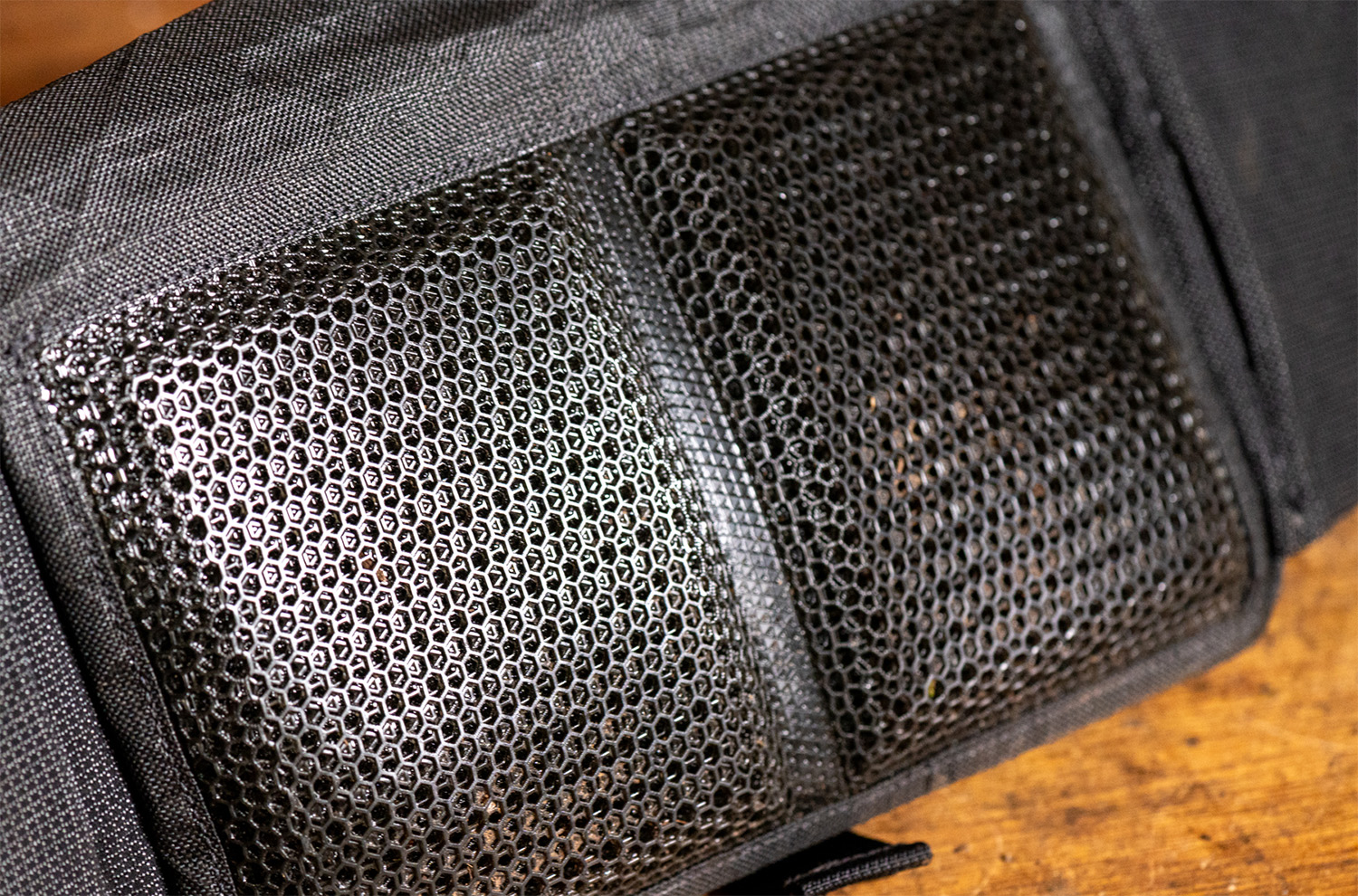
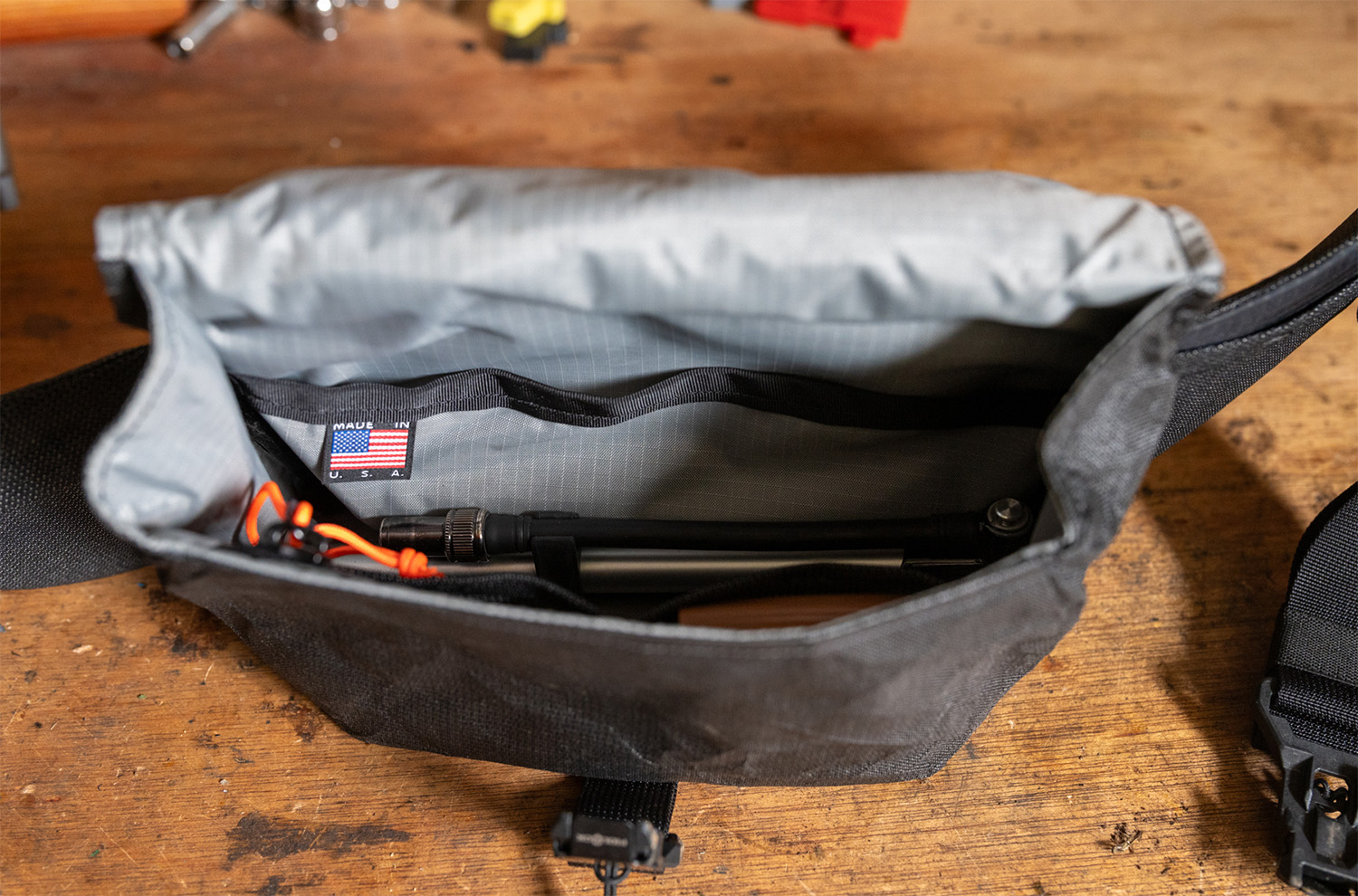

The Venture 3D has a few other tweaks compared to the standard Venture. The biggest one is that the Venture 3D forgoes the bottle carrier on the side of the Venture, and instead puts stretchy pockets on the wings for small items such as snacks. The Venture 3D also uses Challenge Ultra 400X face fabric for the bulk of the pack, which High Above says is five times as abrasion resistant and half the weight of their standard face fabric (as used on the Venture and most of their other packs).
The fancier materials in the Venture 3D do add up cost-wise. At $200, it’s admittedly quite expensive. High Above’s take is that the Venture 3D is their attempt at making an ultra-premium, ultra-durable pack that carries especially well, allowing them to pull out the stops and not worry about cost. Befitting of that goal, the Venture 3D has proven to be the most comfortable, most stable hip pack I’ve tried to date. Like all of High Above’s packs, it’s made in Washington and comes with a lifetime warranty.
Finisterre Women’s Yarrel Chore Jacket
MSRP: $170
Kristin Sinnott: Finisterre, a British-based company, was started in 2003 “to make innovative products for hardy British surfers.” Admittedly, I wasn’t familiar with the company until recently, but after wearing the Yarrel Chore Jacket, I’ve been perusing their online catalog weekly.
The Yarrel Chore Jacket that I’ve been using is made with a 97% organic cotton / 3% elastane twill weave. The fabric feels lightweight but also substantial enough to wear in cool weather, or dare I say, actually to do chores in. The relaxed fit, slightly stretchy fabric, and bit of articulation allow for a full range of motion. A jean jacket has been my go-to casual option for warmer weather for about a decade, and while I still plan to wear mine often, I’ve been reaching for the Yarrel Chore Jacket more regularly.
While the fit and fabric make this jacket comfortable and easy to wear, one of the reasons I have been gravitating towards the Yarrel Chore Jacket more often is because the pockets are extremely practical.
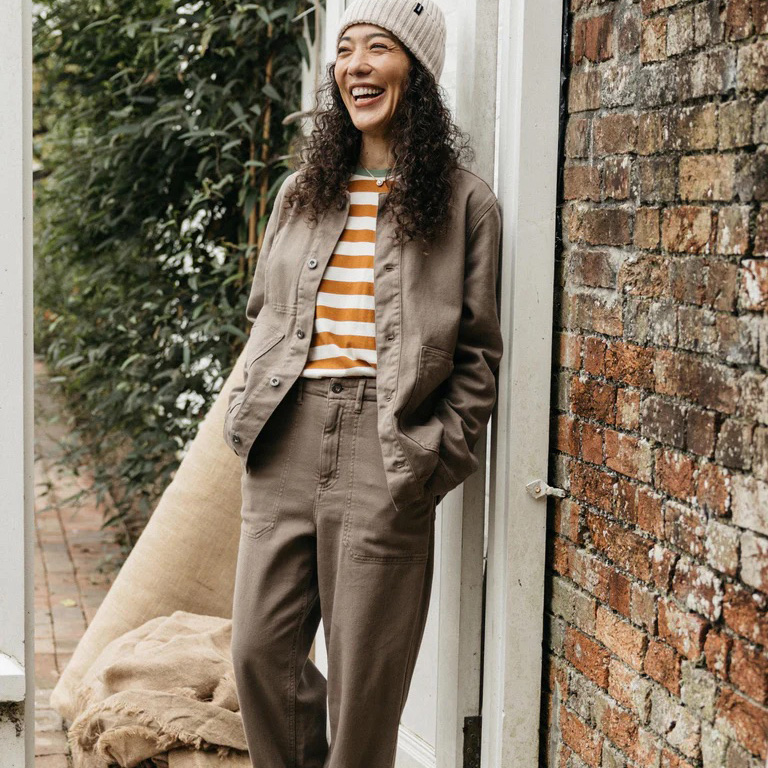
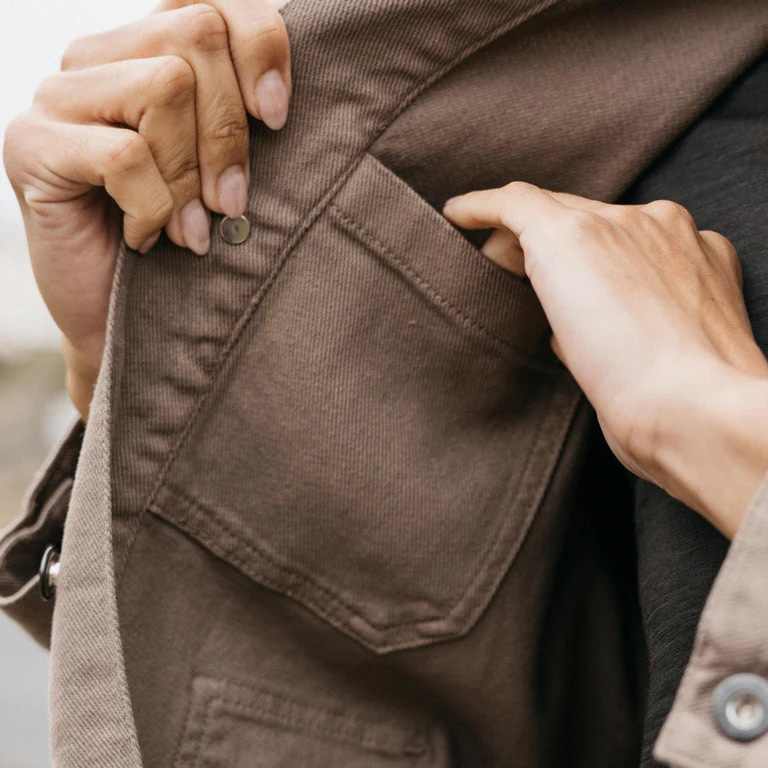

The two hand pockets, with their large design and diagonal opening, can fit my phone and / or hands comfortably. And unlike some of my lightweight, technical jackets, placing my phone in the pocket doesn’t weigh down the entire side.
When reviewing Finisterre’s size chart, I was between the US size 6 and 8; I opted for the size 6, and I’m happy I did (I’m 5’8”, 135 lbs / 173 cm, 61 kg). The sleeves and torso are a perfect length, hitting halfway down my hand and covering most of my rear. If you’re looking for a casual, comfortable, lightweight jacket, I highly recommend checking out the Yarrel Chore Jacket.
Wolf Tooth Resolve Diameter Swap
MSRP: $45-50 (varies by size)
David Golay: I’ve already reviewed the Wolf Tooth Resolve dropper post, and I continue to be a fan. My take on the Resolve’s performance hasn’t changed since that review, but I want to highlight Wolf Tooth’s spare parts availability for the Resolve — specifically the fact that they sell the lower tube on its own, so that you can swap between 30.9 and 31.6 mm diameter versions of the Resolve without buying a new post.
I had a 30.9 mm Resolve that I wanted to move to a bike that takes a 31.6 mm post. I first tried using a shim, but quickly had issues with that setup slipping, and went back to the drawing board.
Happily, Wolf Tooth sells the outer tube for the Resolve on its own, and the 30.9 and 31.6 mm versions of the post use the same stanchion and internals. (The 34.9 mm Resolve uses a larger diameter stanchion, so you can’t swap diameters on that one.)
The new lower tube runs $45 to $50, depending on the length, and swapping it is an easy ~15-minute job. You, of course, need to partially disassemble the post, but you don’t need to open up the cartridge or any of the hydraulic innards.
It’s a nice detail on a nice post, and Wolf Tooth deserves credit for their Right to Repair policy, and the stellar small parts availability that goes with it.
